Jon Ritman’s first contact with computers was at the age of 13, in a trip to Brussels. His eldest brother worked at the Belgium city as an IBM System/370 programmer. To be precise, at the Computer Department of the well-known sewing machines company, ‘Singer’.
Years later, Jon began to work at ‘Radio Rentals’, an electronic equipment rental company, where he repaired TV’s. In 1981, ‘Radio Rentals’ decided to include in his product offering some Atari computers. Being conscious that specialized personnel would be needed, Ritman decided to purchase a Sinclair ZX81, to familiarize with computers. Soon, he’d discover his outstanding talent.
Just three months after purchasing the ZX81, Jon developed his first game, the one whose title begins with the author’s surname backwards: ‘Namtir Raiders’ . When he started to program, he didn’t even know the assemblers existence. The book he was using to learn machine code didn’t mention them, so he had to assemble all the machine code by hand, it is to say, he had to convert the Z80 microprocessor instructions into their hexadecimal operation codes and, afterwards, place them in the memory. A hard task, and no satisfying at all. When he eventually discovered them, he decided to re-write all the game code. Jon sent his work to several companies that had published press advertisements, surely with the aim of catching whiz guys or, at least, some good products In the end, it was Artic Computing Limited who got the prize and published the game in 1982 for £3.95. It seems that ‘Namtir Raiders’ had low selling rates, because Jon himself said in an interview for Gamasutra that he doesn’t remember having seen the game in any shop. However, it was an excellent starting point in his career as a programmer. Most of us have liked to have a start like that.
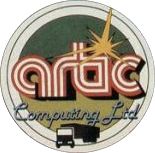
The following year, 1983, he published not one, two or three, but four more games. While improving his programming techniques and, at the same time, getting accustomed to the ZX Spectrum, he created in another three months period ‘Cosmic Debris’, a clone of the famous ‘Asteroids’. Artic sold it at a £4.95, selling the not at all tiny amount of five thousand copies. Jon used the company assembler write the code, a tool with great improvements if compared with the Bug Byte assembler for the ZX81 he worked with in his first game.
A few months later, his first color game (and the first one that crossed the Britain borders) was released: ‘3D Combat Zone’. Apart from the United Kingdom, it was released both in the Netherlands and Spain, where it was distributed under the Microbyte label as ‘Combat 3D’. ‘3D Combat Zone’ is an astonishing game because it takes place in a real 3-D scenario. Of course it was not the first one (mainly because it was clearly inspired by the Atari arcade machine, ‘Battlezone’), but it was truly great watching it running in the Spectrum in 1983. Jon had to re-study trigonometry –he had already done it at school– to create it. About six thousand copies were sold, at £5.95.
Ritman finished that year with two games that were completely different: ‘Dimension Destructors’ and ‘Bear Bovver’. The first one is a 3-D game –as ‘3D Combat Zone’- and was his first attempt to create an original game (the three previous games were inspired in arcade machines). It was his bigger selling success up to then, because it sold seven thousand copies between United Kingdom and the Netherlands. With ‘Bear Bovver’ he was able, at last, to quit his job at Radio Rentals. Although it seems unbelievable, he had been working at full time; he programmed the games in his leisure time, at the cost of, as he said once, his social life. ‘Bear Bovver’ is a nice platform game that was again released in the United Kingdom, Spain and the Netherlands. Its selling figures tied the ‘Dimension Destructors’ ones, although it was sold at a higher price; to be precise, £6.95.
Shortly before ‘Bear Bovver’ releasing date, Jon attended with his friend Chris Clarke to a videogame fair in London, with the aim of finding out which kind of game the companies were looking for. The answer was clear and unanimous: they wanted a football game for the Spectrum, like Andrew Spencer’s ‘International Soccer’ that had been created for the Commodore 64 several months earlier and that was getting a great success. With so clear ideas, Jon started to work immediately. However, before the fair he had been doing tests, transforming his ‘Bear Bovver’ graphics into football players. This was due to the fact that, at a previous fair, while watching the Artic ‘World Cup Football’ with David Ward -one of the Ocean Software Limited founders-, this one asked Jon about his opinion. Ritman answered his game would be a thousand times better than that one. Nine months later, and about finishing the game, Ward phoned Ritman asking him about the point the game was. After seeing it, Ward offered a nasty amount of money and Jon signed for ocean. His relationship with Artic didn’t finish then: they have split time before because of the different opinions about the way ‘Bear Bovver’ had been promoted and distributed.
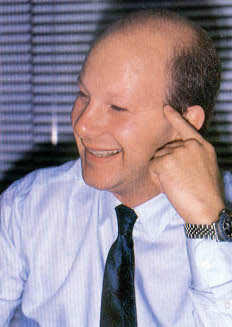
Obviously, that football game was ‘Match Day’. ‘Match Day’, above any other thing, was a funny game, very funny, that has an outstanding virtue: the possibility of playing against another player. One with the keyboard, the other one with the joystick… and to spend hours and hours dribbling, kicking, and enjoying the goals. Certainly, it was possible to play against the computer, but after a little practice it was easy to discover the weak aspects. In fact, there were some movements that finished always with a goal. ‘Match Day’ was, for Ritman, the big step in his career as a programmer: it received excellent reviews, and sold more that fifty thousand copies; an spectacular amount in any case, but even more if you take into account that we’re talking about a 1984 game. It is pretty clear that Ocean knew the game was going to be a real success.
The day Ritman went to the Ocean offices to give the final version of the game, Ward gave him a copy of a game that would be released a few days after, suggesting him to take a look at it. Ritman did it the same night and he was impressed with such a marvelous thing. The aforesaid game was the one and only ‘Knight Lore’, from Ultimate, that extraordinary masterpiece that turned upside down the videogame industry and stablished the foundations of a whole genre: the isometric perspective video adventure.
Jon put himself to work in his own isometric game. He contacted with his friend Bernie Drummond, knowing he was a great drawer, and he proposed him to create the graphics for the new game. But to know how to draw on the paper is one thing, and something very different is to design graphics for a computer like the Spectrum. It was a bit difficult for Bernie to adapt, but after some time he began to design excellent sprites. Once the team was assembled, they put themselves to thing about which the main game character could be. In the end, they chose Batman. When Ward knew about the project, he began to negotiate an agreement about the character’s rights with DC Comics.
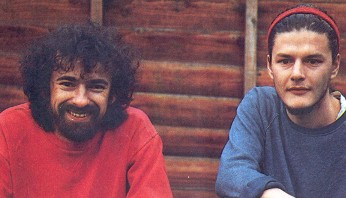
In 1986 Ocean released ‘Batman’ —the videogame— with an extraordinary selling success and excellent reviews. Your Sinclair gave him a nine, Crash a 93%, Sinclair User the five stars and Microhobby gave him ten out of ten in graphics and nine out of ten in addictiveness. In this case, the fame of a popular fictitional character was joined with a game technically outstanding. Not only Ritman succeeded in create an isometric engine that was better than the Ultimate one, but Drummond did a graphics that were full of imagination and quality.
But Ritman and Drummond hadn’t said their last word. A year later, they released ‘Head over Heels’. ‘Head over Heels’ is the summit of the ‘Filmation’ technique, developed by Ashby Computers & Graphics (Ultimate). Although in 1986 the comparison with ‘Batman’ was unavoidable, the game has an aspect that makes it clearly different: the symbiotic characters concept. The geniality of this idea is, not to manage several characters –in fact, in ‘Everyone's a Wally’ (Mikro-Gen, 1985) the player could control up to five- but to join them for creating a new one with the abilities of both of them. Added to this, Bernie Drummond’s colossal work –he designed nine different scenarios and more than forty elements-, the carefully traced plot and the well balanced difficulty level, make ‘Head over Heels’ a true masterpiece. Don’t be surprised, dear reader. The one who’s writing this doesn’t create a whole website devoted to this game just for the love of it. The specialized press brought it to the covers and wrote rave reviews: Your Sinclair ranked it nine out of ten; for Crash it was very close to perfection, because they gave it a 97%; Sinclair User gave it the five stars, and Microhobby gave it four pages of the magazine. ‘Head over Heels’ was a superselling game, and Ritman himself became one of the most prestigious programmers of the eighties.
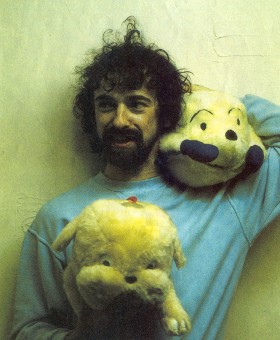
That same year Jon has time enough for re-writing –again with Bernie Drummond’s collaboration— his first big success. ‘Match Day II’ is quite similar in many aspects to the previous game, although it improves them technically, and it includes an innovation that would be very influential in the football videogames from that point: the so called kick-o-meter. The point is to control the strength of the kick with just a button; the longer you press it, the higher the strength is. This game would be Ritman’s farewell to the 8 bits computer world.
When Rare —the company founded by the Stamper brothers, the same brothers that had founded Ultimate— decided to increase his personnel, Jon talked with them and started to work as a freelance employee. He collaborated in the creation of the GLAM tool, which would be basic for the creation of the company games in those years. It wouldn’t be until the first nineties –to be precise, in 1994- that Ritman and Drummond created a new title, this time for the Game Boy console. ‘Monster Max’ evocated the best of Ritman’s games, because it was another isometric perspective videoadventure, with colossal dimmensions: the map contained six hundred rooms. ‘Monster Max’ is an excellent game –it reached a 98% qualification in a specialized magazine, and probably it’s one of the best games created for the portable console- but it has an awful commercial distribution that originated low sales figures.
Soon after ‘Monster Max’ releasing, Ritman left Rare to create his own company: Cranberry Source. The most outstanding title of the company was ‘Super Match Soccer’. Together with ‘Quintessential Art of Destruction’, they are the only titles of the company. Obviously, it was another football game that, at first, was going to be named ‘Match Day III’. It was released in 1998 for the IBM PC and the Playstation console. It crossed the hits lists with neither glory nor pain.
Cranberry was brought and, since then, Jon has been working for several labels, doing conversions to different platforms and creating games for cellular phones and other portable devices, and other kind of works, but always in the videogames world. We’re looking forward seeing Jon commanding some new title design, but I assume that, taking into account the way the industry works today, that good old days of ‘Batman’ and ‘Head over Heels’ will never return.
At least, Ritman keeps still working in what he does best. Things have gone far worse to Bernie Drummond. The last news Jon listened about him were that he was working in a warehouse. Sometimes, life is so cruel.
Related Links
1. Jon Ritman's biography at ‘Gamasutra’
2. Jon Ritman's personal website
3. Interview with Jon Ritman at ‘El PixeBlog de Pedja’
Jon Ritman's Softography
| Namtir Raiders (1982) Artic Computing Ltd. Sinclair ZX 81 (16 KB) | 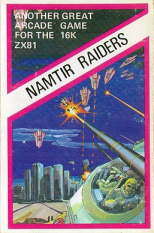 | 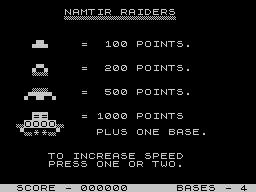 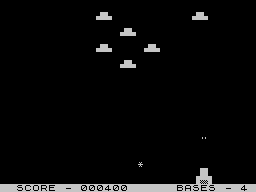 |
| Cosmic Debris (1983) Artic Computing Ltd. Sinclair ZX Spectrum 16K |  | 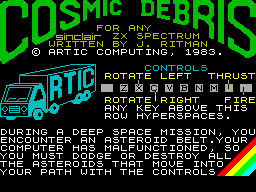 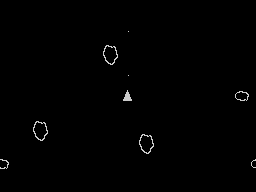 |
| Dimension Destructors (1983) Artic Computing Ltd. Sinclair ZX Spectrum 48K |  |  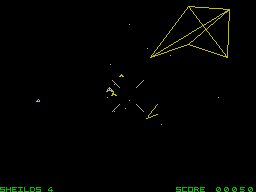 |
| Bear Bovver (1983) Artic Computing Ltd. Sinclair ZX Spectrum 48K |  |   |
| Match Day (1984) Ocean Software Ltd. Sinclair ZX Spectrum 48K Amstrad CPC Commodore 64 BBC Micro |  |  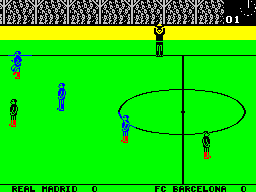 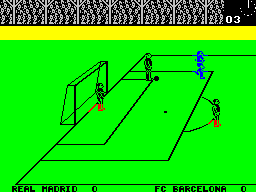 |
| Batman (1986) Ocean Software Ltd. Sinclair ZX Spectrum 48K Amstrad CPC MSX | 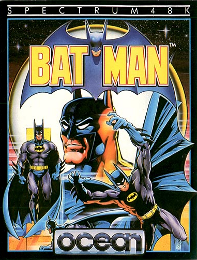 | 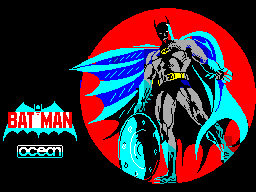 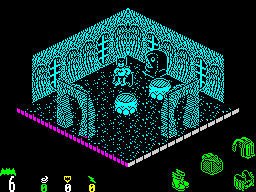  |
| Head over Heels (1987) Ocean Software Ltd. Sinclair ZX Spectrum 48K Amstrad CPC Amstrad PCW Commodore 64 Commodore 16 MSX Atari 800 / XT / XE Commodore Amiga Atari ST |  | 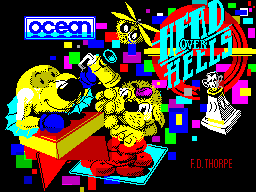  |
| Match Day II (1987) Ocean Software Ltd. Sinclair ZX Spectrum 48K Amstrad CPC Commodore 64 MSX | 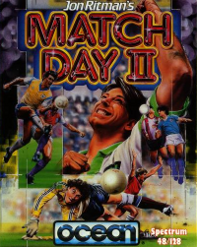 | 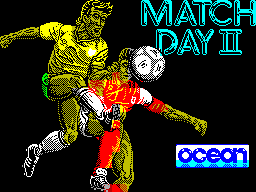 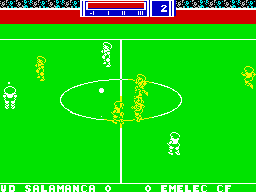 |
| Monster Max (1994) Rare Ltd. / Titus Software Game Boy |  | 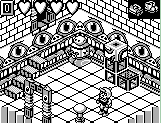 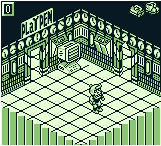 |
